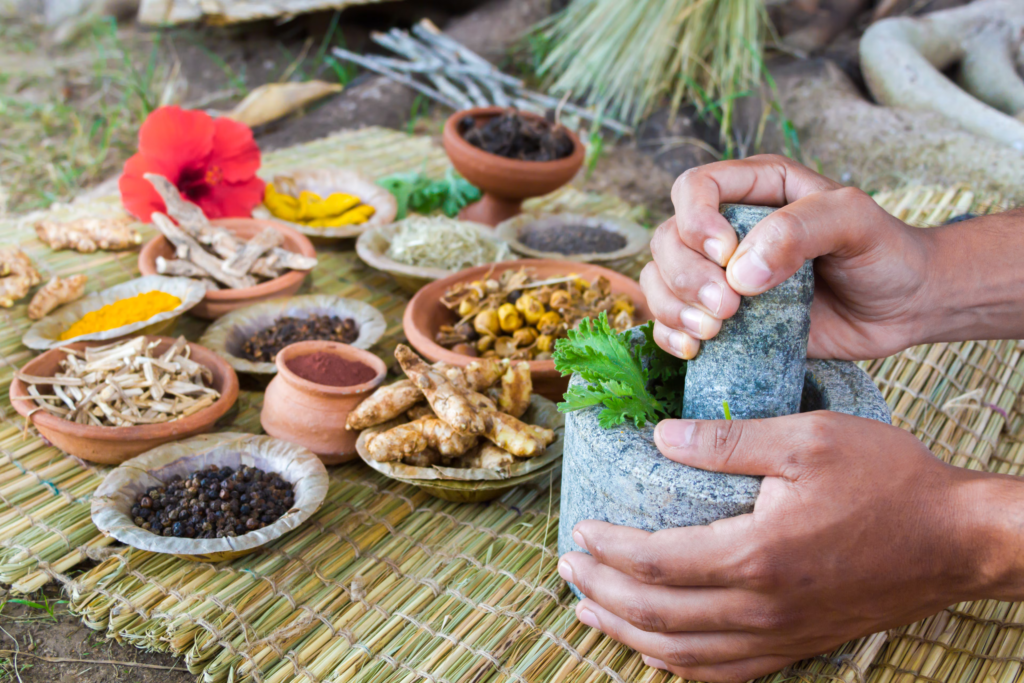Have you ever considered how old healing techniques might help you today? Now gaining traction in contemporary healthcare, Ayurvedic practices provide a holistic approach to staying healthy. In this blog, we will uncover what Ayurveda is, its core concepts, modern relevance, real-life testimonials, and simple exercises to incorporate daily. Together, let’s explore the traditional medicine of Ayurveda and understand how it can improve your life.

1. Introduction to Ayurveda
The ancient form of medicine Ayurveda dates back more than 5000 years and is said to have originated in India. The term “Ayurveda” translates to “science of life,” which signifies the focus on the circulation, balance, and maintenance of bodily energies – spirit, mind, and body. Ayurvedic practices assist in restoring the optimal functioning of the body using diet, lifestyle and herbal medicine.
While modern medicine focuses on a particular problem, traditional medicine, such as Ayurveda, focuses on a person’s entirety. Everyone is considered different; therefore, each treatment is personalized for you. Many people have discovered the benefits of Ayurveda since it is very gentle and natural. It is indeed one of the best ways to support your health.
2. Core Principles
The main ideas of Ayurvedic practices are easy to understand. Each person’s body contains five elements: earth, water, fire, air, and space. These five elements interact to create three energies or doshas: Vata, Pitta, and Kapha. Everyone has different levels of these doshas, and that influences the individual’s health and personality.
You will feel good when these doshas are balanced. Conversely, if these doshas are not balanced, one may feel exhausted, stressed, or ill. Traditional medicine in Ayurveda uses food, herbs, and routines to help bring balance back. For example, if you are anxious (too much Vata), you may benefit from eating supportive warm foods like soups. These principles are designed to help you understand your body so you can use nature to remain healthy.
3. Ayurveda and Contemporary Medicine
Currently, Ayurvedic techniques are used alongside contemporary medicine to assist people in novel ways. Wellness practitioners and physicians are starting to appreciate the effectiveness of Ayurveda in managing stress, persistent pain, and even digestive problems. Health centers in India and the U.S. now provide Ayurvedic therapies, which include herbal massages and detox diets, in addition to conventional treatment.
For instance, Ayurveda’s approach to stress management is widespread. Meditation and breathing exercises are known to relieve anxiety and address issues such as chronic stress and hypertension. Some studies indicate that traditional medicine’s techniques, such as turmeric as an anti-inflammatory agent, are just as effective as some modern-day medicines—without adverse effects. Blending ancient practices and modern approaches makes healthcare more holistic and tailored to individual needs.
4. Success Stories
Let us examine how Ayurvedic practices have been helpful to people. Priya, who lives in London, is a 35-year-old teacher who suffered from poor digestion for many years. She took modern medicine, which worked but did not provide a lasting solution. Finally, an Ayurvedic practitioner suggested a diet class aligned with her dosha. Being a Pitta, she was told to incorporate cooling foods such as cucumber into her diet and drink fennel tea. A few weeks later, her stomach felt much better, and she had more energy.
Another story is about Mark, who is 50 years old, lives in California, and has joint pain. Rather than relying solely on pain medication, he decided to try Ayurvedic oil massage with sesame oil and herbs. Over a few months, he was able to move more freely, and his pain significantly decreased. These stories illustrate the benefits of Ayurveda and how easily traditional medicine can change lives when used wisely.
5. Cutting Ayurveda Into Your Day
Bringing Ayurveda into your life doesn’t require expertise. Here are the simplest ways to enjoy the benefits of Ayurveda:
- Dosha Breakfast: Discover your dosha and eat food that balances it. For example, Vata dosha individuals should eat warm meals, while spicy foods are better for those with Kapha dosha.
- Morning tea: Drink ginger tea first when you wake up to unblock your digestion and wake the body parts that have fallen asleep overnight.
- Oil Pulling: Wagging coconut oil in the mouth for 5 minutes can help improve oral hygiene.
- Gentle Movement: Short walks and yoga can help you stay active and calm your mind.
- Sleep Well: To get consistent sleep, set a sleep routine. This can help you sleep early and rise with the sun.
To develop the concept of balance, I started drinking ginger tea every morning, and I feel that now I do not need coffee to wake up. These small concepts make adding traditional medicine to my daily routine easy.
A Natural Approach To Personal Wellness
Ayurvedic medicine is an alternative approach to improving your health naturally, proving why traditional medicine is still essential today. Reducing stress and balancing doshas are only some ways Ayurveda positively changes one’s health. Take the first step by eating according to your dosha and noticing the difference in how you function in your body.
If yes, how was your experience? share your experiences in the comments; I look forward to reading them.


